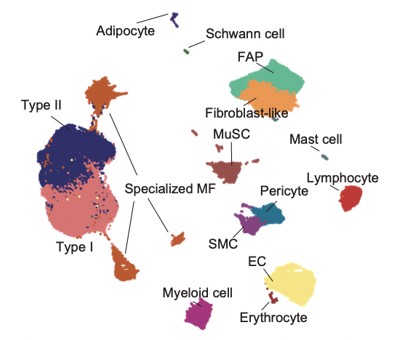University students improve their comprehension if the questions are inserted in the text instead of at the end
- Scientific Culture and Innovation Unit
- November 28th, 2022

An investigation of the Interdisciplinary Research Structure (ERI) of Reading of the University of Valencia (UV) affirms that, for the learning of sciences in university students, it is more efficient to integrate the questions in the development of the text than to accumulate them at the end. Applying this method, as the researcher Alba Rubio did for this study published in the journal Instructional Science, has resulted in more focused and careful learning, and helps to better remember what has been learned.
Including questions in the development of complex science texts has proven to be useful for students, helping them distinguish relevant information and giving greater depth to a first reading. In addition, it helps to better understand what has been studied. With this system, students are more efficient when it comes to locating and distinguishing the necessary information, since they do not have to make an effort to remember where the information may be once they reach the final questions.
To carry out this study, we have had the cooperation of both Marian Serrano Mendizábal and Eduardo Vidal-Abarca, also from the ERI Lectura, all of them members of the Department of Evolutionary Psychology and Education of the UV. Marian Serrano Mendizábal affirms that this study “shows that the questions inserted in the texts direct the cognitive resources of the students to the key information and can help them connect it with their previous knowledge, and that is the basis of learning”.
Despite its greater effectiveness, it has been shown that this learning system is not applicable to the entire educational system, since it has already been proven that applying it to children was counterproductive. There is a lack of research in the field of changes in learning methods, therefore, without a comparison of this system with other methods, it cannot be confirmed that this system is always the most efficient for university students. Even so, it is argued that this non-universal method has proven to be useful and should be taken into account when writing teaching materials.
The basis of this work are the results of an exam given to 76 students of the Teaching Department of the University of Valencia on a text that they studied five days before. The class was divided into two groups, those who had the integrated questions and those who had all at the end. The results show how the students in the first group processed the information more deeply, answered more questions correctly, and knew how to better identify relevant information.
For this study, the Read&Learn research tool has been used, which, in addition to recording reading time, hides the text and divides it into short sections. To discover each fragment, you have to click on the phrase, so that this controls the number of times you click and what type of information is invested in each question, since these fragments are differentiated by the study between relevant and irrelevant.
Article: Rubio, A., Vidal-Abarca, E. & Serrano-Mendizábal, M. «How to assist the students while learning from text? Effects of inserting adjunct questions on text processing». Instr Sci 50, 749–770 (2022). https://doi.org/10.1007/s11251-022-09592-7
File in: Investigació a la UV , Finançament recerca , Psicologia Evolutiva i de l'Educació , Internacionalització recerca , Facultat de Psicologia , Col·laboració amb empresa , Difusió i comunicació científica , Recerca, innovació i transferència
















